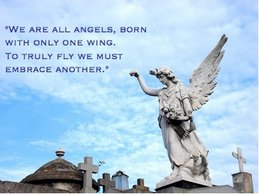10 Years Ago Today in Berlin’s Turm Strasse

The author of "Journey from the Land of No: A Girlhood Caught in Revolutionary Iran", Roya Hakakian, offers a fascinating op-ed piece in the NY Times about the 1992 assassinations of four Iranian Kurdish leaders at a restaurant in Berlin called Mykonos that led to a trial in Berlin's highest criminal court that took nearly four years and culminated in a verdict, 10 years ago today. The verdict implicated the Iranian leadership — the supreme leader, Ali Khamenei; the president at the time, Ali Akbar Hashemi Rafsanjani; and the foreign minister, Ali Velayati — as the masterminds of the crime. She is also writing a book about the assassination of Mykonos. Here are some tidbits:
DAWN had always arrived in Berlin’s Turm Strasse with the bustling of shopkeepers and the drowsy hiss of buses pulling into their stops. Always, except on the morning of April 10, 1997. On that day, the street had been cleared of traffic and blocked to anyone but pedestrians. On the rooftop of every building leading to Nos. 91-92, snipers had been stationed.
Turm Strasse 91-92 is the address of Berlin’s highest criminal court. It is also the site of one of the least known, yet most momentous events in the contemporary history of Germany and Iran. The 1992 assassinations of four Iranian Kurdish leaders at a restaurant called Mykonos led to a trial that took nearly four years and culminated in a verdict, 10 years ago today, that implicated the Iranian leadership — the supreme leader, Ali Khamenei; the president at the time, Ali Akbar Hashemi Rafsanjani; and the foreign minister, Ali Velayati — as the masterminds of the crime. An arrest warrant had already been issued for the minister of intelligence, Ali Fallahian.
Nostalgia has a way of augmenting reality, which may be why those who were there remember droves of thousands along the street. The crowds were ready for mayhem — armed with bullhorns, boom-boxes and loudspeakers — if the verdict were lenient toward the assassins, who had been members of the Hezbollah, or if it failed to address the role of the Iranian leadership in the murders, the latest in a chain of assassinations of Iranian dissidents throughout the world.
Through tens of hours of interviews, I have often wondered why I, the supremely squeamish, the one who reaches for the remote when an actor reaches for his revolver, should be interested in the story of so gruesome a murder. The answer came to me as I sat packed among strangers in the coach class of a Berlin-bound Continental flight: Tyrannies strip nations of dignity, as do exile and war. And I have experienced that unholy trinity. I am an exile who has lived through the Iranian regime’s tyranny and the early years of the Iran-Iraq war.
The verdict in the Mykonos trial was a victory for every displaced or oppressed Iranian. Through this trial, the German judiciary restored dignity to Iranians by insisting that we were not dispensable beings. If there is one community of Muslim immigrants about whose assimilation Europe needs not worry, it is the Iranian community in Germany. By extending its laws to these immigrants, by giving them justice, the German judiciary gave Iranians a taste of what they could never have in their own country.
More than any assimilation program possibly could, this event turned ordinary Iranian immigrants into loyal German patriots. Former political prisoners, whether under the shah or the current regime, saw how a real court operates. Democracy, many of them believed, was a superior system, the right way to run a society. In this particular case, it was also highly therapeutic.
For once, Iranians had the pleasure of proving to Westerners, who are perpetually consumed by atrocities committed against their own, that the first victims of the Iranian regime and Hezbollah were Muslim Iranians, and that their war with the Western world began much later than their war against Iranians. Had Europe, had the world, spoken against those earlier crimes, the beast of terrorism may not have grown into the multiheaded monster that it is today.
Roya Hakakian's book, "Journey from the Land of No", is a must-read for anyone who wants to understand the Iranian revolution and how it was hijacked by the militant Islamic Jihadist and their leader Khomeini. Below is the editors' review of her book:
Political upheavals like the fall of the Shah of Iran and the rise of Islamic fundamentalism may be analyzed endlessly by scholars, but eyewitness accounts like Hakakian's help us understand what it was like to experience such a revolution firsthand. The documentary filmmaker and poet was born to a prominent Tehran Jewish family in 1966, two years after the Shah had exiled Islamic fundamentalist leader Ayatollah Khomeini. As Jews in a largely Muslim world, the family knew how to live respectfully with their neighbors. With powerful illustrations, Hakakian relates how, in 1979, when the Shah fled and Khomeini returned triumphant, she joined the cheering crowds. Khomeini's revolution seemed liberating, but before long, the grip of the Islamic extremists tightened. Women were put under strict surveillance; books and speech were censored. Anti-Jewish graffiti appeared. As the targeting became more visible—being made to use separate toilets and drinking fountains, being required to identify their businesses as non-Muslim—many Jews emigrated. After Hakakian describes the teacher who risked her job to give her high marks on a "subversive" paper or grips readers with the tale of how she and her teen buddies barely evaded the morality police, readers just want her to leave, too, which her family did, in 1984. Hakakian's story—so reminiscent of the experiences of Jews in Nazi Germany—is haunting.
Visit Her website here.


No comments:
Post a Comment